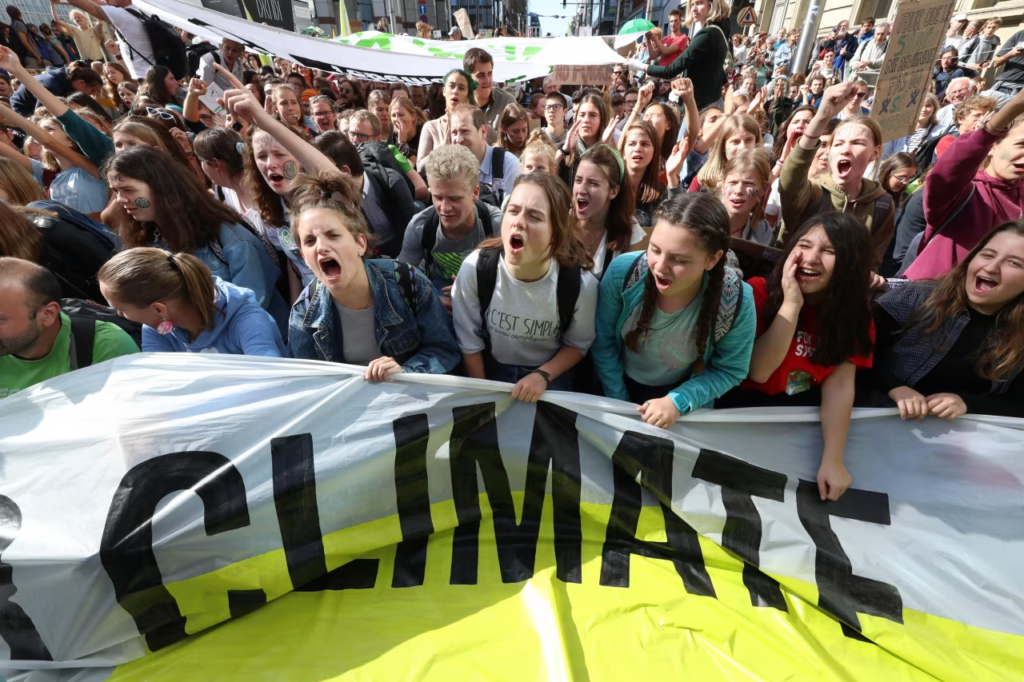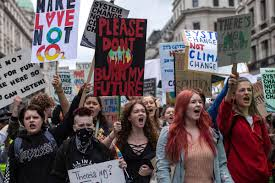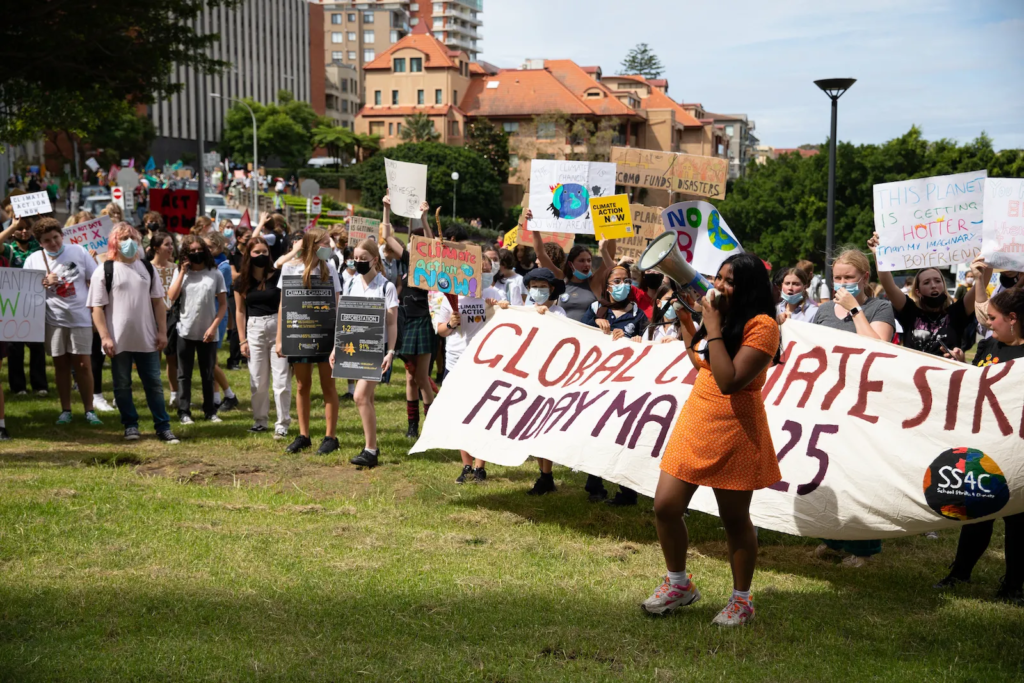Across the United States, a powerful wave of youth-led climate strikes is gaining momentum, with young activists taking to the streets in cities from New York to San Francisco to demand urgent action on climate change. These passionate, determined voices are calling for faster adoption of renewable energy and tougher emissions policies from both corporations and the government. Inspired by global movements and driven by a sense of urgency, these protests mark a turning point in how the next generation is shaping the fight for a sustainable future. This growing trend reflects not just frustration with inaction but a bold vision for a cleaner, greener America.

A Rising Tide of Youth Activism
The youth climate movement in the U.S. has exploded in recent years, fueled by a generation that feels the weight of a warming planet on their shoulders. From high school students to young college graduates, these activists are skipping classes and organizing marches to demand immediate action. The movement draws inspiration from figures like Greta Thunberg, the Swedish teenager who sparked the global Fridays for Future campaign in 2018 by protesting outside her country’s parliament. Her call to action has resonated deeply in the U.S., where young people are increasingly aware that climate change will shape their future more than any other issue.
In cities like New York, Boston, Seattle, and Washington, D.C., thousands of young people have gathered in recent years to make their voices heard. One of the largest demonstrations occurred in September 2019, when an estimated 250,000 people, mostly youth, flooded the streets of New York City to protest government inaction on climate change. These strikes have continued to grow, with organizers planning events in over 1,000 locations across the country, supported by unions, businesses, and even school districts in some cases. The message is clear: young people are done waiting for change—they’re demanding it now.

Demanding Faster Renewable Energy Adoption
At the heart of these protests is a call for the U.S. to shift rapidly from fossil fuels to renewable energy sources like solar, wind, and hydropower. The science is undeniable: burning fossil fuels is the leading cause of greenhouse gas emissions, which drive global warming. Young activists argue that the transition to clean energy isn’t happening fast enough. They point to record-breaking solar and electric vehicle sales in 2023 and 2024 as proof that renewables are viable, yet they see barriers like insufficient grid capacity and slow policy changes holding progress back.
In many cities, strikers are pushing for policies like the Green New Deal, a bold framework championed by progressive lawmakers that calls for a complete shift to 100% renewable energy by 2030. They want states and cities to follow the lead of places like Hawaii, which passed a law in 2015 requiring its electric utilities to achieve 100% clean electricity by 2045, or California, which offers incentives for industries to reduce emissions. These examples show what’s possible when governments prioritize clean energy, and young people are urging their leaders to act with the same urgency.
The frustration is palpable. “We’re the ones who will live with the consequences of inaction,” said one 17-year-old organizer at a recent San Francisco strike. “Renewable energy isn’t just an option—it’s the only way to secure our future.” This sentiment echoes across the country, as young people demand that policymakers and corporations invest heavily in clean energy infrastructure, from solar farms to electric vehicle charging stations.
Calling for Stricter Emissions Policies
Beyond renewable energy, youth activists are pressing for stricter emissions policies to hold corporations and governments accountable. They argue that voluntary commitments aren’t enough—binding regulations are needed to ensure that polluters reduce their carbon footprint. In cities like Seattle, where over 1,500 Amazon employees joined a climate strike in 2019 to protest their company’s environmental practices, young people are targeting corporate giants directly. They want companies to adopt transparent, science-based targets to cut emissions and shift to sustainable practices.
On the government side, activists are calling for policies that set clear emissions reduction goals. States like Vermont and Massachusetts have already taken steps in this direction, with laws requiring significant cuts in greenhouse gas emissions by 2030 and 2050. Vermont, for example, mandates fossil fuel wholesalers to reduce emissions by 26% below 2005 levels by 2025. These policies are exactly what young strikers want to see scaled up nationwide. They’re also pushing for federal action, like declaring a climate emergency to unlock resources for renewable energy and disaster preparedness.

The youth movement isn’t just about policy details—it’s about justice. Many strikers emphasize that climate change disproportionately harms marginalized communities, including low-income neighborhoods and communities of color. They’re demanding a “just transition” that ensures clean energy jobs and benefits reach those who need them most. This focus on equity has brought diverse voices to the movement, amplifying its impact and resonating with a broader audience.
A Movement That’s Evolving
The youth climate strikes have evolved since their early days. While school walkouts remain a powerful tactic, activists are adopting new strategies to keep the pressure on. Some are engaging directly with policymakers, meeting with lawmakers like Representative Alexandria Ocasio-Cortez and Senator Ed Markey to discuss the Green New Deal. Others are taking legal action, like the young plaintiffs in the Juliana v. United States case, who are suing the government for failing to protect their right to a livable future. These efforts show that the movement is growing more sophisticated, blending protest with policy advocacy and legal challenges.
Social media has been a game-changer, allowing young organizers to coordinate across cities and amplify their message. Hashtags like #ClimateStrike and #ActOnClimate have trended nationally, drawing attention to the cause and inspiring more people to join. Platforms like X have become hubs for sharing stories, organizing events, and calling out corporations for greenwashing—when companies falsely claim to be environmentally friendly. This digital activism ensures that the movement stays visible and keeps growing.
Challenges and Hope for the Future
Despite their momentum, youth activists face significant challenges. Resistance from political leaders and fossil fuel industries remains a major hurdle. Some policymakers dismiss the strikes as disruptive or unrealistic, while others argue that the cost of transitioning to renewables is too high. Yet the science is clear: the cost of inaction—rising sea levels, extreme weather, and economic disruption—will be far greater. Young people are also grappling with eco-anxiety, the fear of an uncertain future, but they’re channeling that fear into action.
The support for the movement is growing, and it’s not just limited to youth. Teachers, parents, and even businesses like Patagonia and Ben & Jerry’s have joined the strikes, showing that this is an intergenerational fight. Cities like New York and Boston have excused students from school to participate, recognizing the climate crisis as a legitimate reason to protest. This broad support gives the movement staying power and signals that the public is ready for change.
Looking ahead, the youth climate strikes show no signs of slowing down. Organizers are planning more actions, from local rallies to national campaigns, to keep the pressure on. They’re also focusing on voter turnout, encouraging young people to support candidates who prioritize climate action. With 1.8 billion young people globally—the largest youth generation in history—their collective voice is impossible to ignore.
A Call to Action
The youth-led climate strikes in U.S. cities are more than just protests—they’re a wake-up call. Young people are demanding a future where clean energy powers homes, businesses, and communities, and where corporations and governments are held accountable for their impact on the planet. Their message is resonating, inspiring hope, and driving real change. From state-level clean energy mandates to corporate pledges for sustainability, the impact of these strikes is already visible.
But the fight is far from over. To make a lasting difference, the U.S. needs bold, immediate action. That means investing in renewable energy, enforcing strict emissions standards, and ensuring that the transition to a green economy lifts up everyone. The youth are leading the charge, and they’re inviting all of us to join them. Will we listen?
Read more :- Top 10 Best American Superfoods That Boost Immunity Naturally





